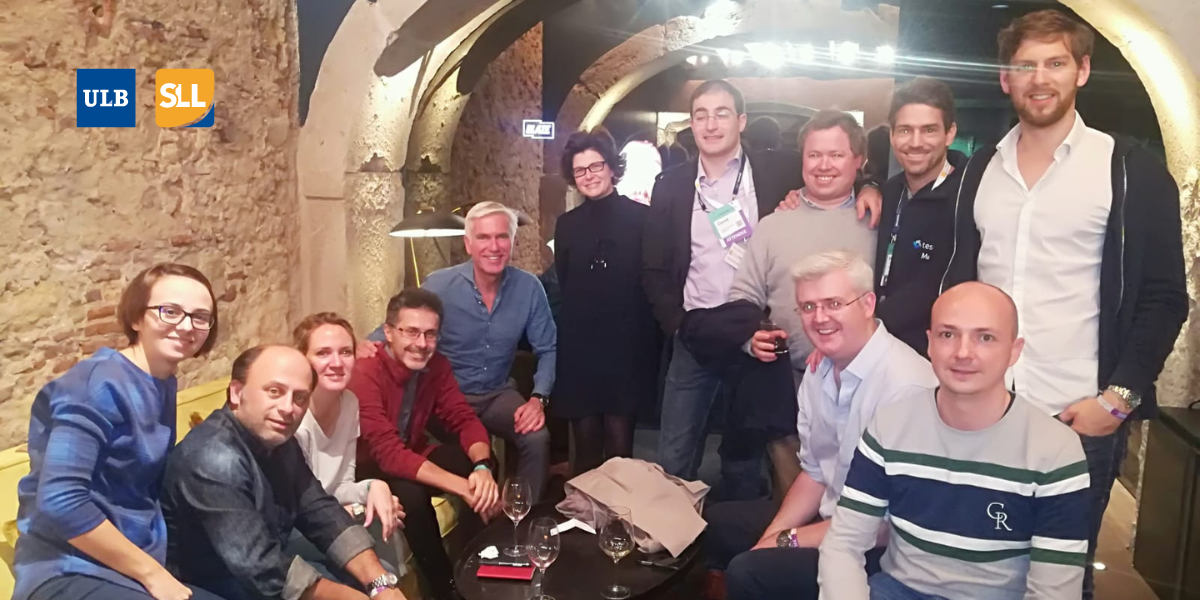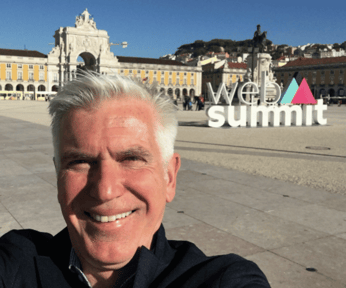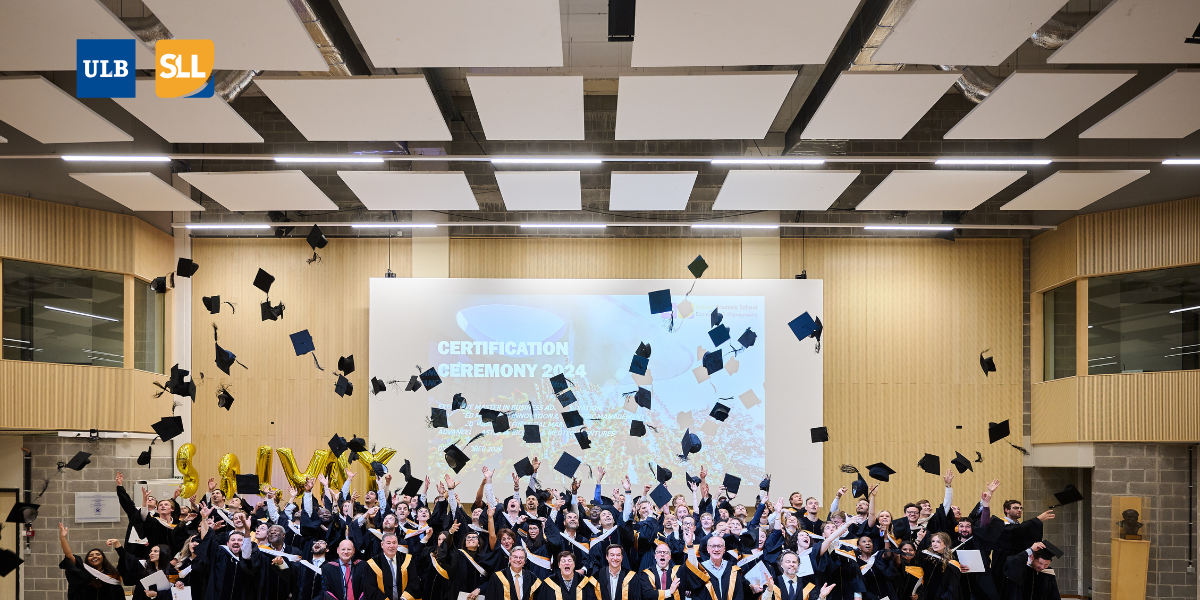Learn more about us.
Lisboa Web Summit - Takeaways from Solvay Brussels School MBA Expedition
Another successful edition of the Lisboa Web Summit took place in 2018. Forbes calls it “the best tech conference on the planet.” John Metselaar, Professor of Management Practice in "Leading & Living Innovation" at Solvay Brussels School was there for the second time to enjoy the "Learning...

John Metselaar |Author
John is Professor of Management Practice in "Leading & Living Innovation" at Solvay Brussels School as well as Economy, Strategy, & Finance Center Leader, EMEA at The Conference Board.

Stay connected
Never miss the latest insights, blogs and news. Subscribe to our newsletter.
Another successful edition of the Lisboa Web Summit took place in 2018. Forbes calls it “the best tech conference on the planet.”
John Metselaar, Professor of Management Practice in "Leading & Living Innovation" at Solvay Brussels School was there for the second time to enjoy the "Learning Expedition" together with a group of Solvay's Executive MBA students, as one way to ensure they stay at the forefront of developments in the Innovation space.
It has been a fruitful journey that contributed to the cutting-edge competencies we bring to our students.
Seeing how much the focus, priorities, and narrative changed in just a year, John Metselaar is more than keen to share with you his top 5 insights:
1. Save the web: technology should serve humanity, not undermine its core values and institutions
Now that we’re reaching the critical threshold of half the world’s population being connected to the internet, we need to make sure the web remains a positive force and serves mankind and its democratic values while keeping the negatives at bay. Therefore, we need to address security, safety, and privacy concerns, give users more control over their data, and be more transparent about what’s being done with their data. As a prominent European politician stated: “We don’t want to live in our own home full of (virtual) dangers and uncertainties feeling unsafe.”
In addition, as the digital revolution reaches maturity, the tech industry, governments, citizens, and academia all need to work together to keep the “digital peace.” One senior business leader reminded us of how, in the past, as technology moved forward and built an unchecked arms industry, the public largely stayed silent and governments didn’t act, which eventually led to the destruction caused by the first world war. To prevent similar damage now, technology companies need to be more proactive and work with governments to define clear principles and work together on international laws and conventions (like the Geneva convention did). Likewise, citizens need to engage, mobilize, and have their voices be heard. A former world leader summarized this concept nicely: “Technological progress without an equivalent progress in human institutions can doom us.”
2. Redesign the internet to help consumers and focus on quality content
Now that the web has matured, people will be more willing to subscribe to and pay for high-quality content. At its start, the internet’s content was free to lure people in, funded by advertising. The nature of advertising is, by definition, to drive reach and internet hits. The result: the quality of content became irrelevant as “hype” performed best, and the content started serving the advertisers rather than the public. Now it’s time to restore the value of quality content.
Some websites, such as Medium, are already pushing up quality of content. Similar dynamics are already playing out in music (e.g., iTunes, Spotify) and TV (e.g., HBO, Netflix). Developments like these will help us take back control over the internet, including getting a better handle on fake news. At the same time, we need to ensure the digital revolution addresses the widening gap of the haves and have-nots, since it can be a benefit for all of humanity.
3. Diversity takes center stage
Diversity, and gender equality in particular, took center stage at this year’s Web Summit, jumping to a top priority in the conversations. For starters, 44 percent of attendees were women, up from 24 percent five years ago. And the panels were populated with capable, wise, articulate, convincing female professionals, which is a sharp contrast to the ones made up of all white males (skin and hair) that I often find myself on. This year, the visible diversity drove the energy, quality, and promise of the week’s experience. A female executive at a technology company echoed one of my convictions: “We can’t find answers to the world’s problems without the full empowerment of women.”
Here are few insights for illustration:
- Gender inequality is a societal problem that should be owned jointly by men and women—not just by women.
- Most companies need to make diversity and gender equality a business imperative and core leadership value, and start changing their corporate cultures. The CEO of an energy and petrochemical company said: “If you want to get more women to the top, you need to get more women at the top…by holding on to your old boys’ club, you’ll just create more self-reinforcing behaviors and dynamics.” The technology industry, in particular, needs to take responsibility and make closing its significant gender gap a priority.
- Companies should help encourage girls at an early age to seek education in science, technology, engineering, and math (STEM) areas. Some organisations already extend scholarships in these.
4. Entrepreneurship is HOT
Entrepreneurship has become the career of choice for many young professionals rather than getting their first job at a big corporation, like so many of my peers and I did when we graduated last millennium. What a delight it is to see this ambition, energy, hunger, and risk-taking to make the world a better place!
The founder of a social media company shared lessons for new entrepreneurs. Here’s a summary combined with my own wisdom:
- Seek advice from peers who have succeeded in your industry rather than from traditional mentors, because the insight from peers will be more relevant.
- Seek authenticity, not authority. Be humble, transparent, honest, and direct. Be a leader who others want to follow, rather than need to follow.
- Plan for the long-term but operate for the short-term. Seek, celebrate, and leverage early wins.
- Ensure focus. Don’t lose yourself in breadth, and then squander your resources on too many priorities.
- Focus on "health, not hustle." Ignore the prevailing wisdom that unless you’re killing yourself, you’re not working hard enough for success. If you want sustainable results, you need to put your own physical, mental, emotional, and spiritual sanity first.
- Partner with those who share your values rather than with people simply because they are a friend. Shared values ensure alignment; friendships are too fickle, thin, and risky.
- Be relentless in pursuing your goals as well as developing your growth mindset and “bounce-back muscle.” As you move forward, you will fail, learn, and get up again. Always seek inspiration from both positive and negative experiences.
5. Digital disruption on display: the case of the automotive industry
The automotive industry is arguably one of the most fascinating arenas of digital disruption. While autonomous, or self-driving, cars are most obvious, other forms of disruption also exist. "Software takes over" may well be the best descriptor of the industry’s future. Disruptions and dynamics as sensors, connectivity, electric, autonomy, sharing, and transport integration are all transforming the physical car as we know it into a “digital mobility platform.”
In the past, manufacturers differentiated cars by their models and engines. In the future, cars will be differentiated by the functionality of their interiors—this is similar to how you don’t care what the exterior of a plane looks like when flying business class; it’s the interior design of the seating area you’re interested in. We will move from thinking of a car as merely a physical object to thinking of it as an experience to improve one’s quality of life.
Also, expect industries to cross, such as Alphabet introducing Waymo (a self-driving technology development company), and new players like Geely and Byton to emerge. More established companies can play a role in this brave new world, too, if they leverage their existing assets and knowledge toward the new reality as well as experiment with software-ruled and -enabled mobility platforms that are connected and shared.

Stay connected
Never miss the latest insights, blogs and news. Subscribe to our newsletter.

Newsletter subscription
Never miss the latest insights, blogs and news
Subscribe to our newsletter and never miss the latest insights, events and blogs.
What other people like
Related blogs

Bruno is Senior Advisor and Ambassador for Innovation at EY and the Academic Director of the Solvay EMBA and Accelerated Management Programme. He is an expert in strategy, Entrepreneurship and Innovation.
9/04/25

Marianna is the Content & Social Media Coordinator at Solvay Brussels School - Lifelong Learning.
8/04/25

Marianna is the Content & Social Media Coordinator at Solvay Brussels School - Lifelong Learning.
8/04/25


